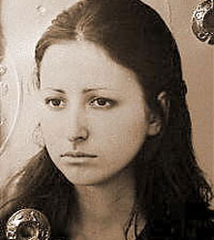On May 12, 1977, Giorgiana – only 19 years old – received the deadly hit of a calibre 22-gun, by the “Special police squads” under orders by the violent and ferocious repression of the minister of the interior and Gladio leader, Cossiga.
On that day in Rome the Radical Party organized a demonstration in Piazza Navona, in order to celebrate the third anniversary of the victory in the referendum on divorce. By defying the demonstration ban for those outside the institutional circle – which was imposed by Cossiga and warmly greeted on the axis of “historical compromise” between the Christian Democracy and Italian Communist parties – demonstrators swelled in the squares.
That long afternoon witnessed the resistance to the numerous charges, the many barricades raised close to Campo dei Fiori square and the throwing of molotov cocktails and live ammunition shots between the demonstrators and the police agents – which on that day reached the number of about 5000 anti-riot policemen deployed to repress and plainclothes agents infiltrated with guns and metal bars.
The State murder was accomplished close to Ponte Garibaldi, where two big motorcycles of the traffic officers mounted by three of them in uniform and a man in plainclothes arrived on the Tevere river promenade at the corner with piazza Belli. A traffic officer came down, grabbed the gun and shot at eye level against the demonstrators in piazza Belli, where Giorgiana was hit by a bullet.
The witness agree: the shots were fired from ponte Garibaldi, where at that time, at the centre, carabinieri paramilitaries and policemen stood, leaning on one or two armored vehicles.
These are the words of Lelio Leone, reporting the event: “I personally witnessed the moment when Giorgiana fell. We arrived at the entrance of Ponte Garibaldi at the time in which police fell back towards Largo Arenula. We pushed forward, until the half of the bridge, exactly in the middle. Meanwhile, the police charged some comrades that fleed in the direction of Largo Argentina. On the bridge there was nobody. Maybe a couple of minutes after the police came back, charging another time in our direction. We stopped before the entrance of the bridge, on the other side of Piazza Sonnino. Then the police charged a second time…with the armored vechicles. They run and shot many times; few tear gas and many live ammunition shots. Together with me in that moment there was some ten other people. The other comrades, in largo Sonnino, were raising barricades with some cars. We hard a hard time in escaping over those barricades that the comrades did set up behind ourselves. Over there, there were a thousand of comrades fleeing. It is absurd to say that the shots came from their side: I was one of the last ones and I did see everyone with their back turned. I was hit in the leg by a tear gas canister, I leaned over and I was forced to turn around. I did see everything: a comrade, Giorgiana, ran a meter and half from me. She fell with her face down on the ground. She tried to get up, it looked she stumbled to me. Then we helped her and loaded her on an Appia car. We rushed her to the hospital. I want to emphasize a thing. Giorgiana was near me, in a group that was fleeing past the barricades that a thousand of comrades made further on. Radio Città Futura said that she was hit in the belly: that left me very perplexed. The hits came only from the part where the police stood. Together with the police there were many plainclothes agents. The ones wearing uniform were on the armored vehicle, with open windows. In the middle of the bridge there were two brick passageways: the plainclothes agents stationed there, and shot.”
The inquiries following the death featured the lawyer Luca Boneschi striving for truth, and gaining a charge for slander by the investigating judge Claudio D’Angelo, that dismissed the case in May 1981.
Years ago there was a futile effort to make the trial restart, by delivering a claim of reopening of the investigation, which was strengthened by the numerous witnesses of those who saw the police agents shooting at eye level on Ponte Garibaldi. On that day there were almost 60 plainclothes agents in the square; many of theme were never trialed by the judiciary, and the only questioned people said altogether that they arrived on ponte Garibaldi after the turmoil.
Cossiga, in an interview of January 25, 2007, declared to be one of the five people aware of the name of the murder.
Paradoxically, the only defendant of the Masi case remained the lawyer Boneschi himself. He was denounced by D’Angelo for having accused the selfsame judge of not having done enough to achieve the truth.
As it did happen and too often happens in Italy, the culprit was never to be found.
A poem for Giorgiana :
“If the October revolution was on May,
If you would be still living,
if I would not be impotent in front of your murderer,
if my pen would be a winning weapon,
if my fear was to explode in the squares,
a courage born from a throat-chocked rage,
if having known you would become our strenght,
if the flowers that we donated to your courageous life in our death
at least could become garlands in the struggle of us all, women, if…
Words would not be trying to affirm life,
but life itself, without adding anything else.”
http://www.infoaut.org/index.php/english/item/17057-may-12-1977-the-murder-of-giorgiana-masi
